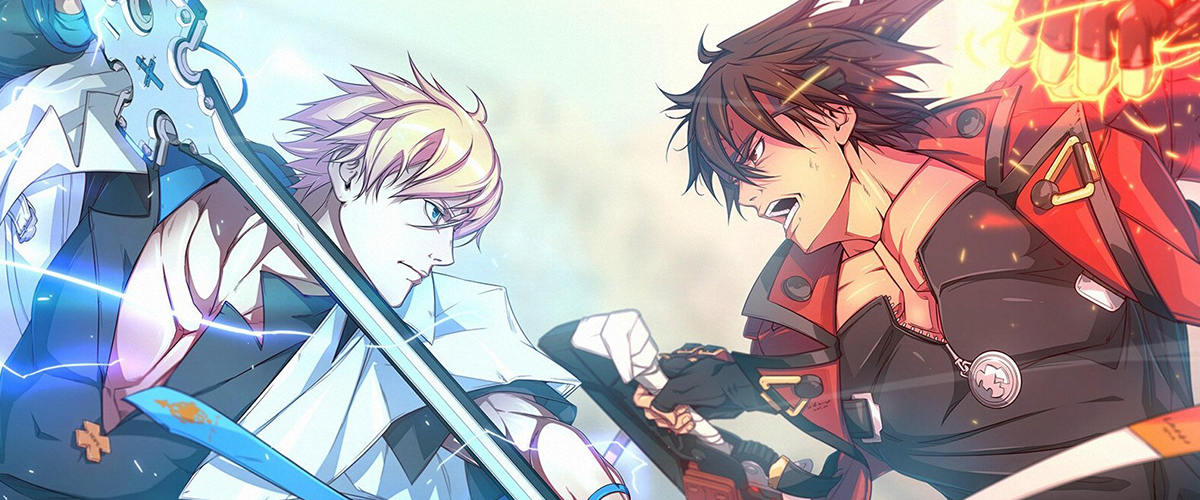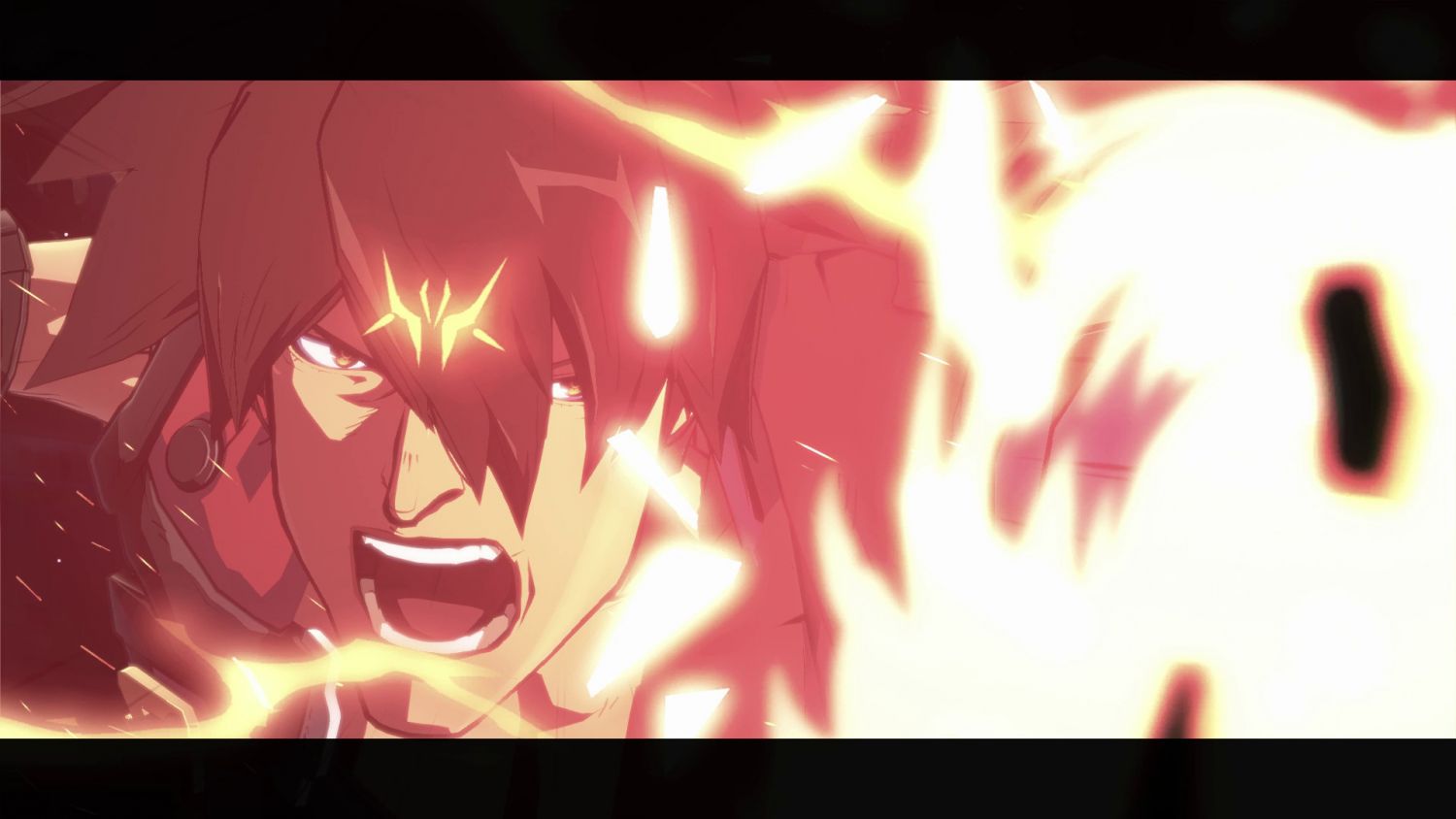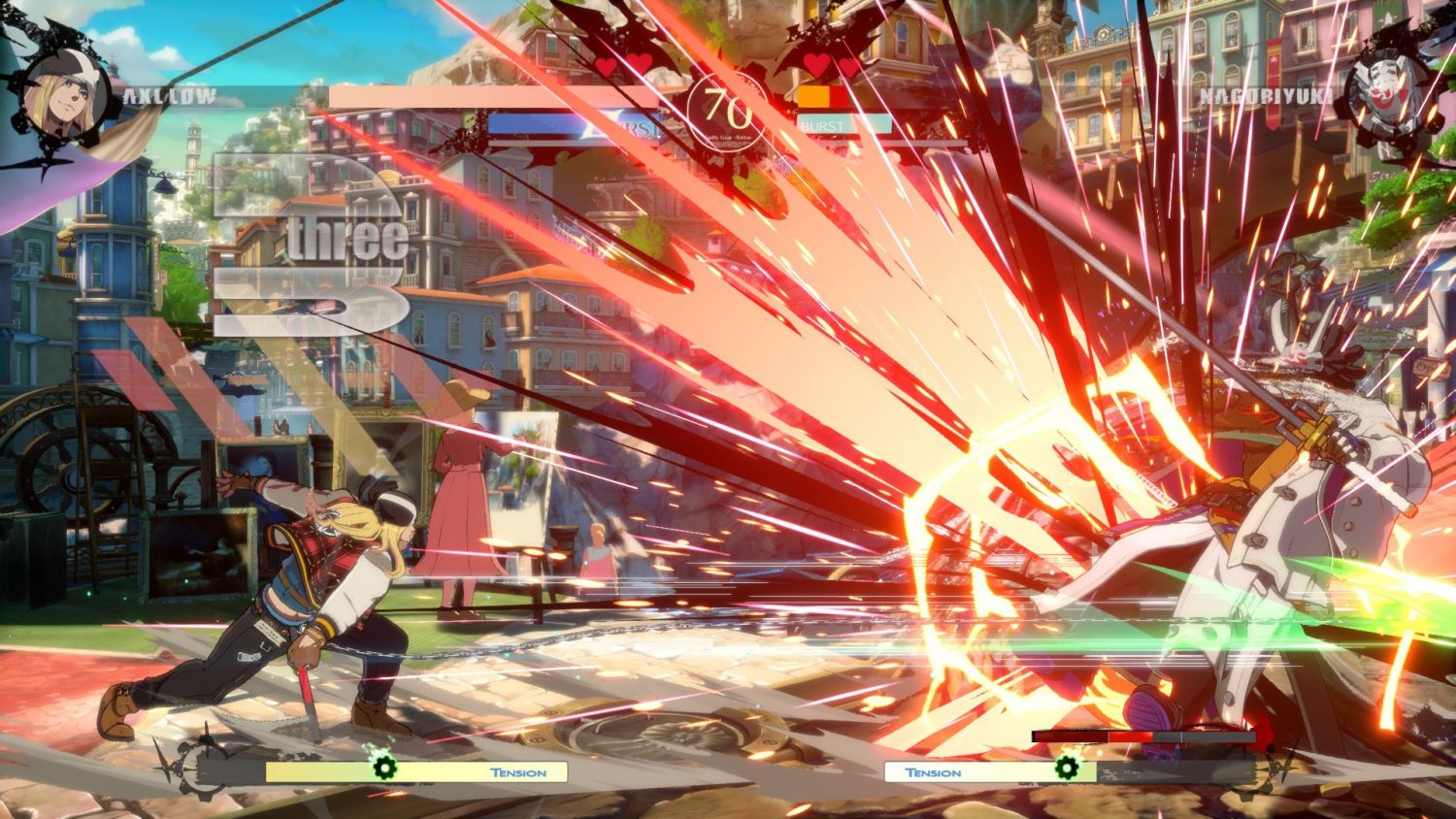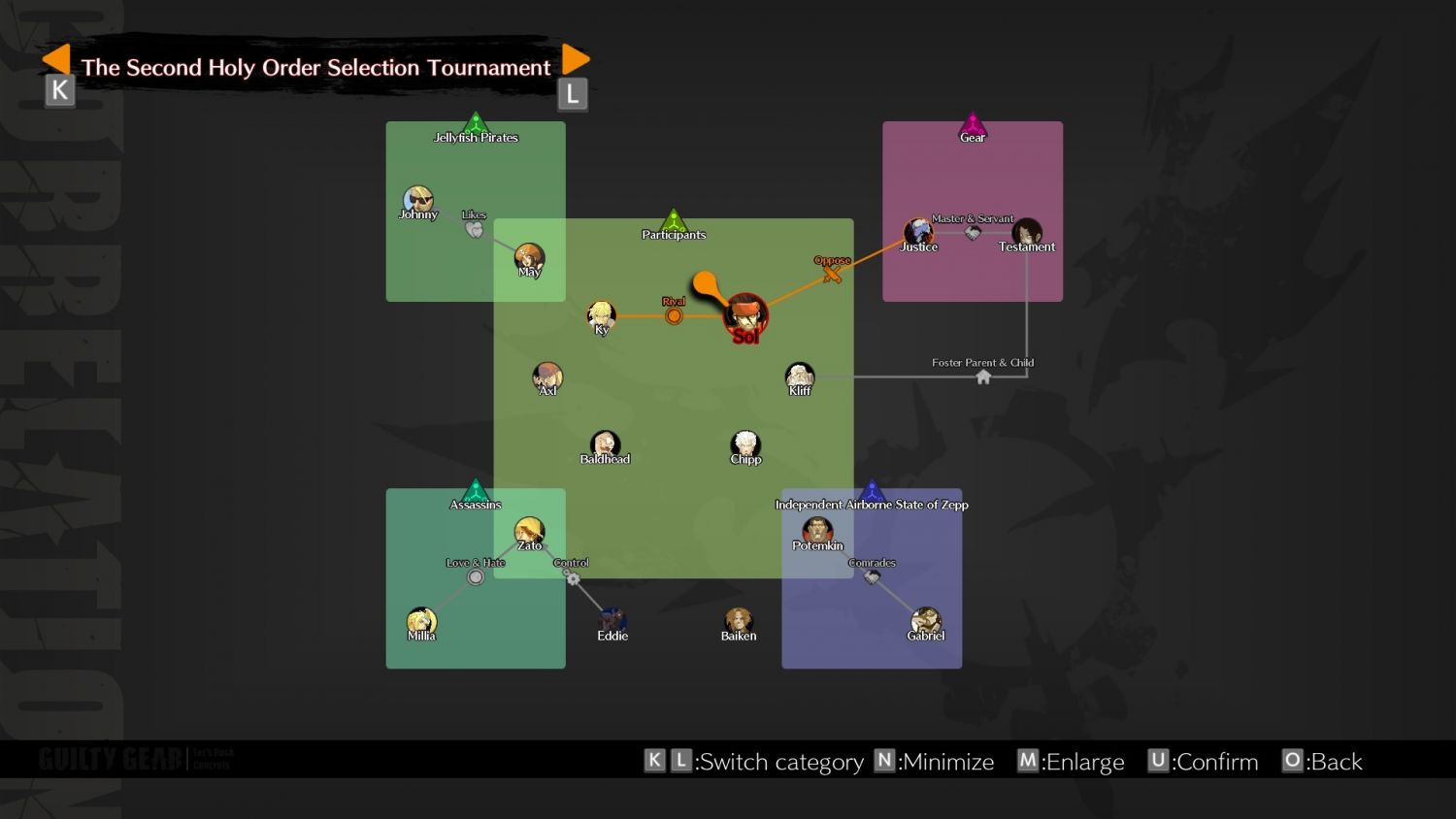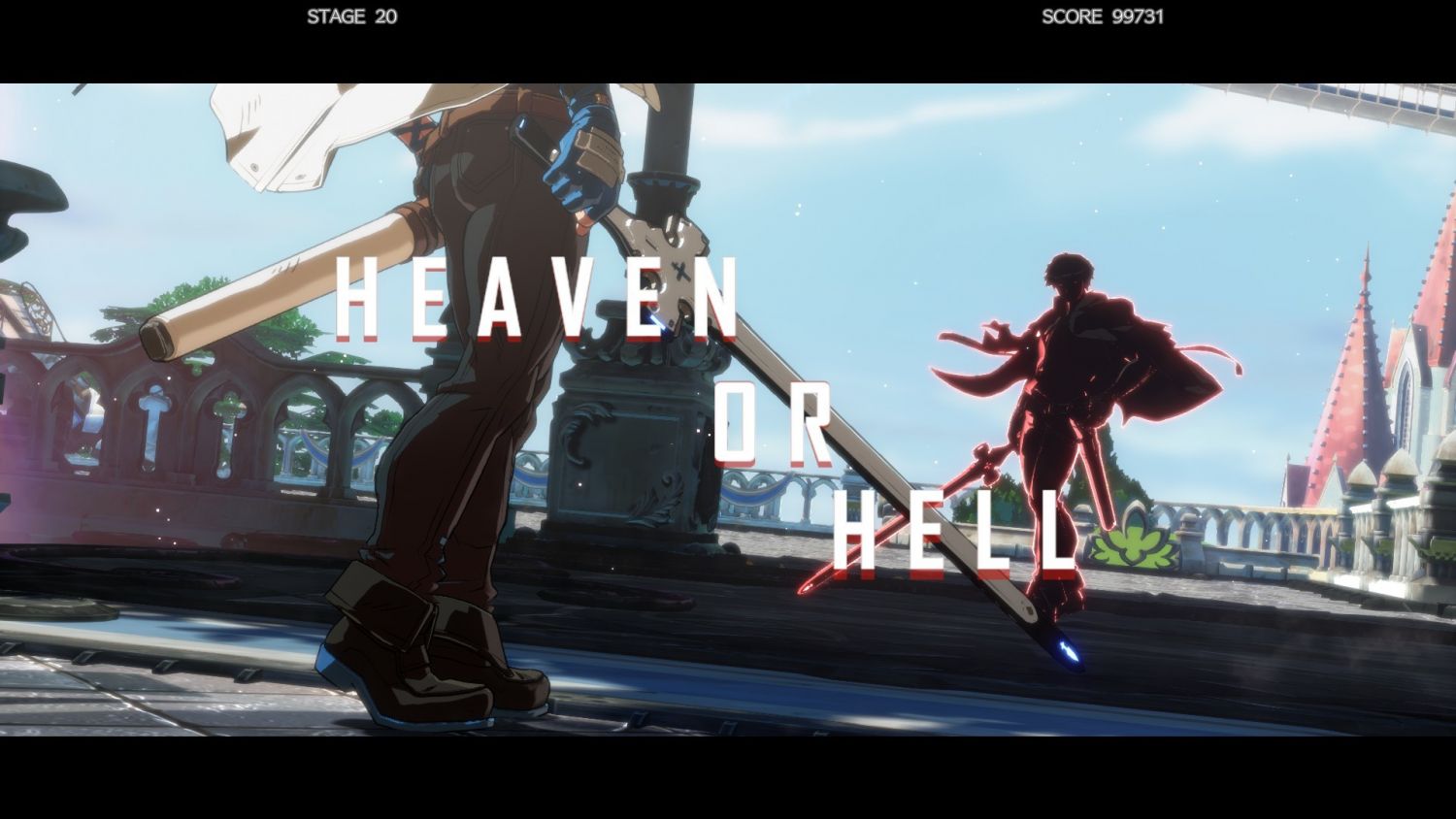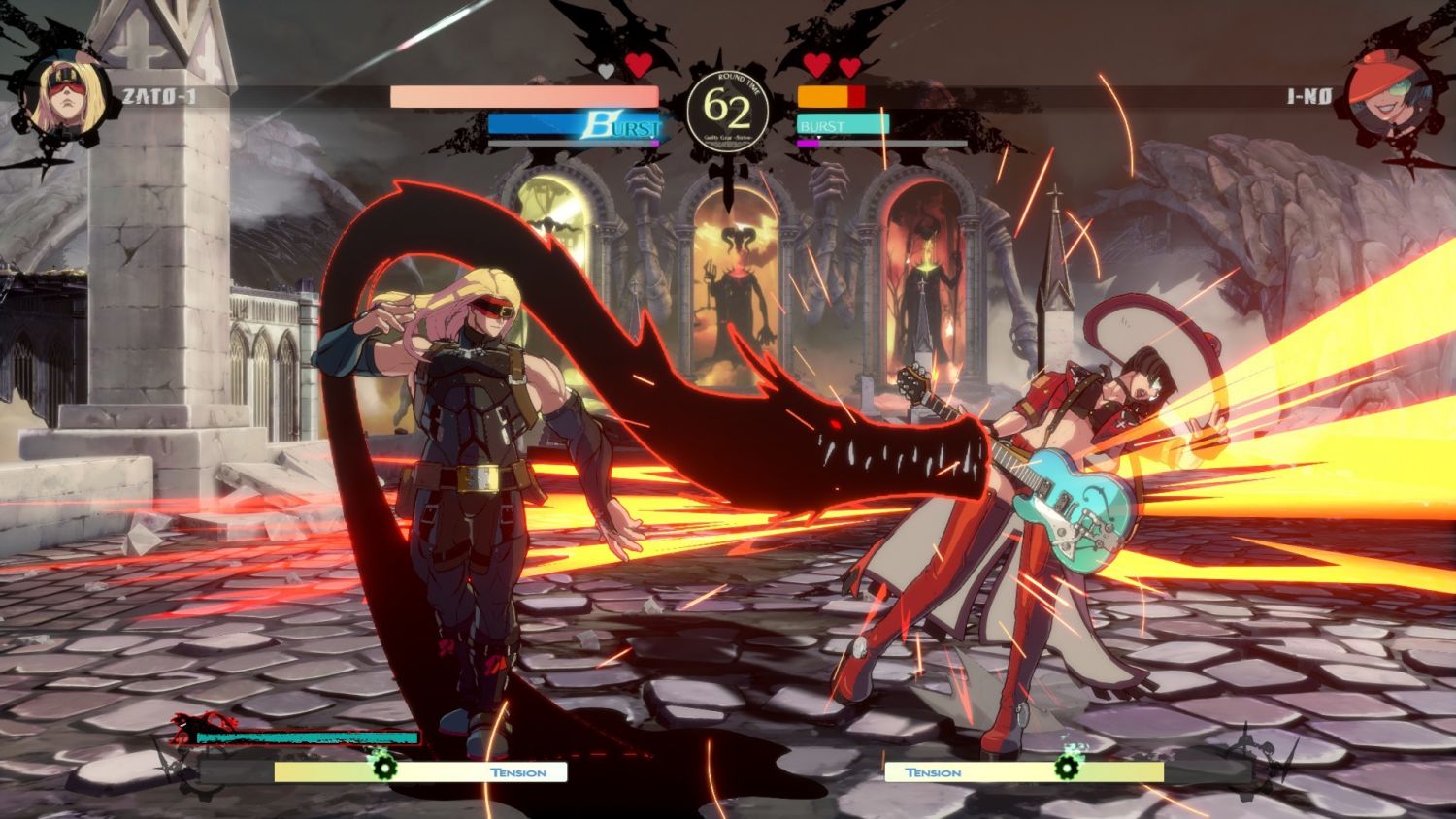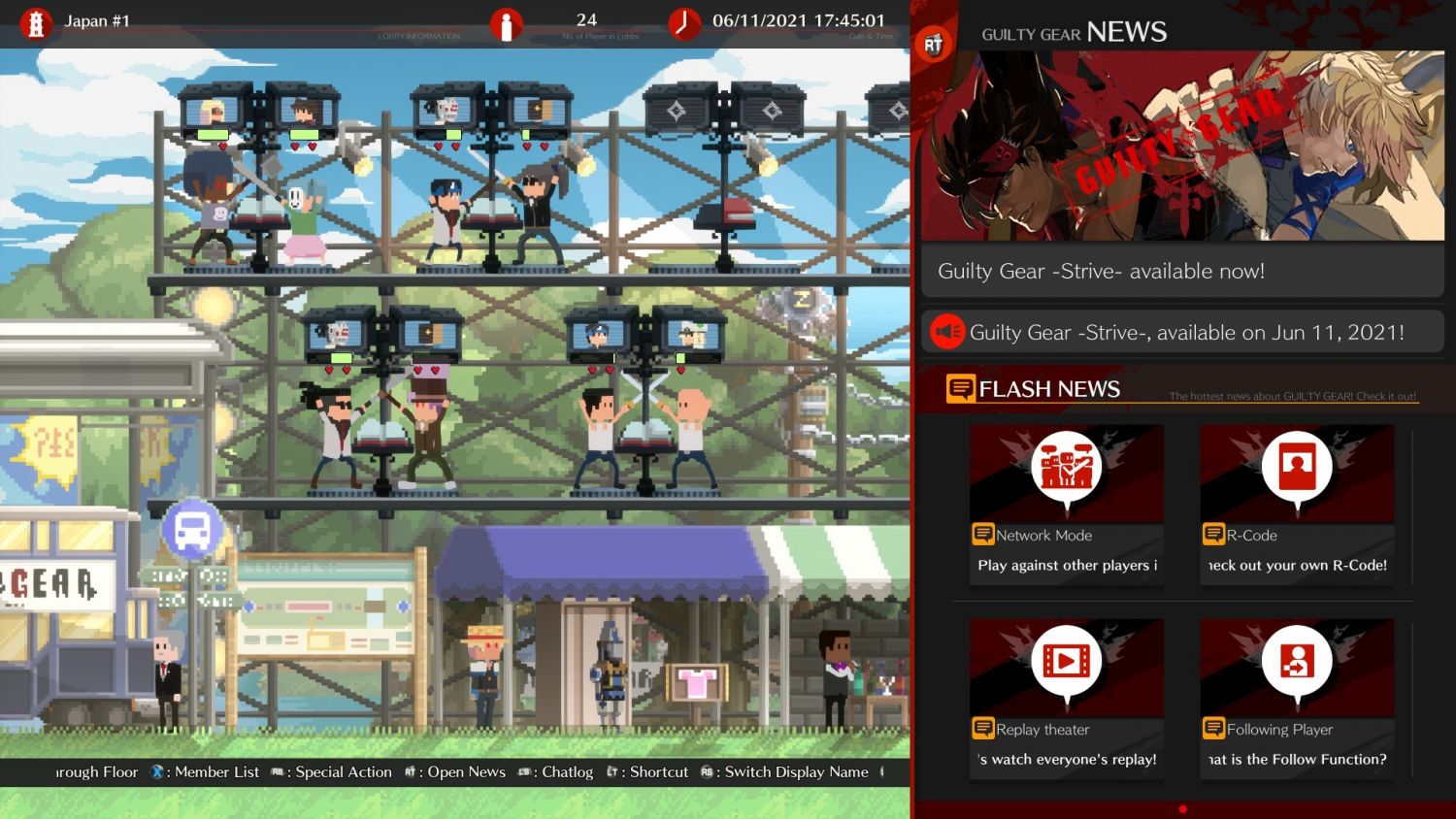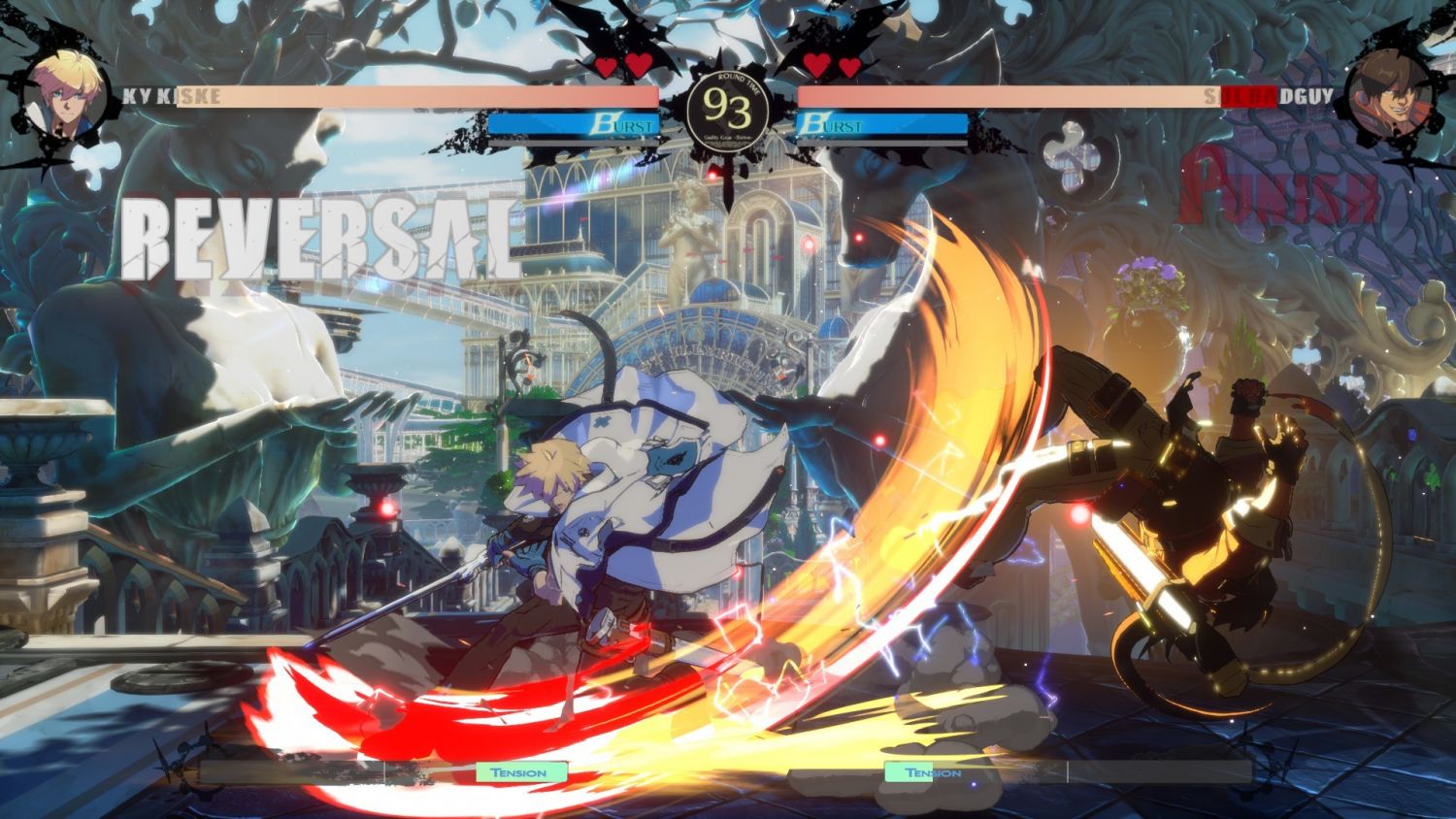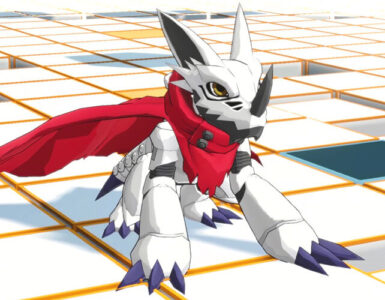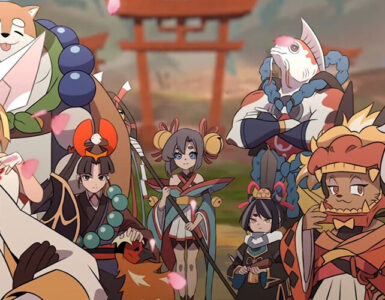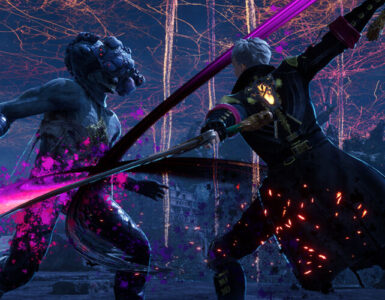When it comes to the fighting game scene, popular stalwarts including Street Fighter, Soul Calibur, and Mortal Kombat come to mind, but there are others who have stood the test of time and forged ahead with slightly more complex combat mechanics. Arc System Works’ Guilty Gear Strive continues to straddle the more niche elements and in doing so, has set a new benchmark for the genre.
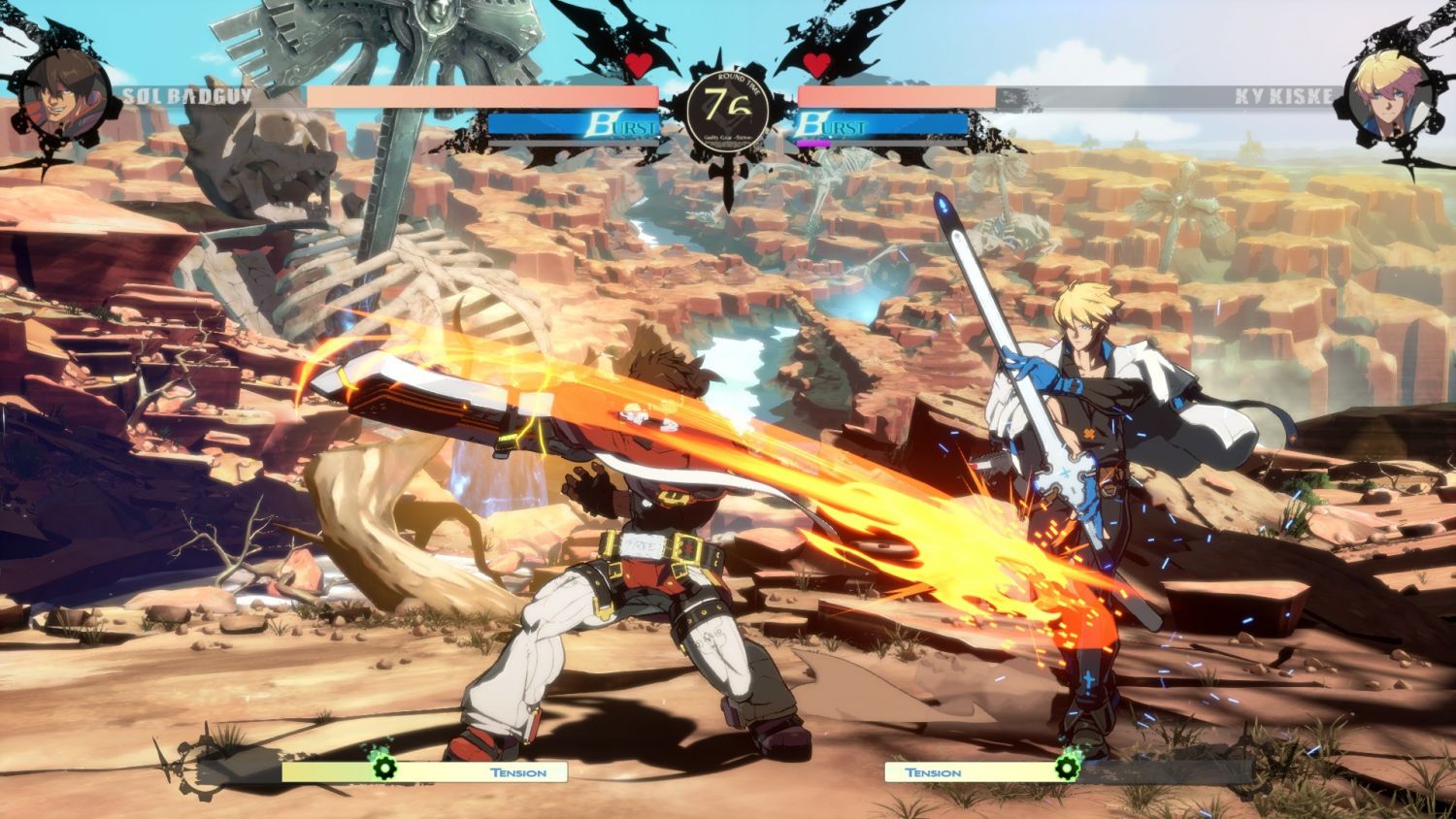
With the undeniably striking art direction with both stages and characters, an intense soundtrack that complements the action, a great balance of both depth and accessibility, and the near-pristine netcode, Guilty Gear Strive has set a precedent not just for the franchise itself, but for all fighting games in general.
From a lore perspective, the series does require you to be heavily invested since its 1998 debut, to fully appreciate everything that is going on in this latest entry.
However, just like how the developers have seemingly thought of everything, Guilty Gear Strive comes packed with an in-game glossary that covers characters, their arcs, and how the story has developed from 1998 to 2187. If you are confused about the relationships between events and people, Arc System Works has you covered as well. This is a staggering amount of work put in, and it should be appreciated.
It is highly recommended that players catch themselves up in order to enjoy the narrative mastery on display. Unlike other fighting games, the unique nature of Guilty Gear Strive’s story mode is delivered without any gameplay whatsoever. Instead, it steers closer to a fully realised anime series that can be enjoyed in one extended sitting.
Quality Bursting At The Seams
A videogame mode that does not require player input other than sitting back and enjoying it? It is a calculated risk, but it is definitely well worth it in this case. By eschewing the struggle to include the entire roster in the story, fans get the full vision of the story Arc System Works is trying to tell and in a sense, it is the purest story mode for the series thus far after Xrd.
Yet, if you are itching for a fight, Guilty Gear Strive is no slouch either. This is a fighting game series that prides itself on demanding technical excellence and precise timing, and suitably lauded for its strategic depth and complex fighting systems. Nonetheless, the team has set out to address that perception with a number of solutions, but without risking the soul of the franchise.
Rather than fights that require a battle of attrition, every bout in Guilty Gear Strive is more about intentional, strategic moves in a game of cat and mouse. A simple combo can deal significant damage, and you do not even have to input complicated commands to do so, players just have to make windows of opportunity count.
The experts are still going to be able to chain together ridiculous combos to whittle the opponent’s health to zero, but the more measured approach allows the others to stand a fighting chance. There is less worry about being cornered or trapped on the ground, the neutral space, where neither side has an advantage in terms of positioning and reach, is the most common space. Compared to the other games in the series, this is a notable step towards opening up the gates to the masses.
A Fighting Chance
Even if players find themselves up against it in a corner against an overwhelming opponent, Guilty Gear Strive resets the fight using the wall break mechanic. It transitions the stage to a new area, but more importantly, with both characters back in neutral. You may be on the ropes, but you can still fight back.
Diving deeper into the combat, Guilty Gear Strive still retains much of the signature intricacy of its forebears. The Gatling combo system, the Dust attacks, all of it works to reward those who put the time and effort into mastering the system.
There is still a strong emphasis on going on the offensive, with blocking and conservative play being frowned upon generally. The Tension meter that can be used for special moves actively drops if you are on the backfoot, charge forward, and it will constantly rise as you kick ass.
It becomes more important as opponents start to read you and begin blocking and countering your moves. This presents a perfect opportunity to tap into the signature Roman Cancels, cancelling the startup or recovery animations of almost every attack, and allowing you to pivot into a different move. It will cost 50% of the Tension meter, but it is significant in giving you another chance to get at your opponent.
The coming together of all of these systems and the creativity in which Arc System Works has approached combat in Guilty Gear Strive make for something truly its own. For all the fighting games out there, none has dared to strike out on a path so distinctly different but still feel awesome to play.
Eye Candy
Of course, the proceedings are helped by the fact that Guilty Gear Strive is heaven on the eyes. This is easily the best-looking 2D fighting game ever made, with smooth animations and eye-catching details that scream quality at every juncture. It is not just the eclectic roster of 15 fighters, the arenas are stars on their own as well, that is, if you have the time to admire them while in a fight.
Arc System Works has also worked hard at creating a soundtrack that will please those who have come to appreciate Guilty Gear for what it is. The heavy rock soundtrack is always on hand to give you a boost in intensity during battles, and for those looking for even more throwbacks, older songs can be bought using the in-game currency.
Speaking of the fighters, the roster adds two new characters in Nagoriyuki and Giovanna, complementing the otherwise familiar and fan favourite veterans that make up the numbers. Nagoriyuki is a special breed of a fighting game character, who is both slow but also fast. In normal circumstances, he has no dash available and is slow in moving and attacking. He does, however, hit hard and from a longer distance than most, and you can utilise his extremely quick command dash to close the distance.
Most interestingly is how he is able to execute commands quite rapidly while allowing skilled players to cancel and transition into any of the special moves continuously. This unpredictability is further expanded upon his Blood Rage mode, which activates with enough special moves used. This amplifies his strength further, but reduces speed even more and drains life. Either you are going to expire by being overly defensive, or you go all out to end your opponent.
Giovanna, on the other hand, is the opposite. She is more simple and straightforward, if you love getting in your opponent’s face and not giving them rest, she is the fighter for you. Her attacks are all quite powerful, and gives her mobility across the arena. Giovanna will resonate well with many players, particularly those not too keen on going in headfirst, and that is a good way to round out the entire cast involved in Guilty Gear Strive.
15 fighters may not seem much, but when you add in the different systems at play and Strive’s new changes, everyone will seem like they are brand new. Players are still going to love their favourites, but they are going to feel enhanced in a myriad of ways.
Unwanted Distractions
Jumping into online play is where you can truly see how much depth there is to all these fighters. While there are certain ways in which characters can excel, how fights can turn out based on who you are playing against is always a pleasant surprise. You just have to overcome the less-than-elegant online lobby in Guilty Gear Strive.
If you want to play online, you will need to create a 2D avatar and standby at a duel station. It is cute for probably the first few times, but seeing that any kind of online play requires this needless process, the frustration will add up. Dressing up 2D avatars is not exactly what people playing Guilty Gear Strive are looking for. It takes away from the fact that the netcode holds up flawlessly, with no issues whatsoever during online play.
The new additions also serve to highlight what is missing from Guilty Gear Strive. The combo challenge mode that used to be a great way to familiarise yourself with a fighter is gone, while arcade mode can feel a little light on the showmanship with just dialogue instead of intros and endings. Having your experience changed depending on if you win or lose is still cool, but something feels like it’s missing.
The Dojo mode and its missions are also a hit and miss. While it does ease you into things and prepare you for the more hardcore concepts of Guilty Gear Strive, it will take a while to get there. Basic lessons can be taught in a matter of seconds, and not require players to perform the action five times. The valuable stuff is all worth learning, just be sure to prepare yourself for a grind.
Generational Shift
At the end of the day, there is no denying that Guilty Gear Strive is set to be a seminal 2D fighting game that has raised the bar to heights unseen thus far. Whether it be the dependable netcode, the stunning visuals, or the interesting yet accessible ways Arc System Works have provided to invite players in, it all culminates in great success.
Keeping the soul of the Guilty Gear series very much alive, this notable slowing down of the fights in Guilty Gear Strive only allows us to admire the series even more, with execution and presentation that has no equal at this very moment.
Guilty Gear Strive is available on the PS Store for $79.90.
GEEK REVIEW SCORE
Summary
A new flagbearer when it comes to fighting games, Guilty Gear Strive smashes onto the scene like the superstar it is.
Overall
9.3/10
-
Gameplay - 9/10
9/10
-
Story - 9/10
9/10
-
Presentation - 9/10
9/10
-
Value - 10/10
10/10

